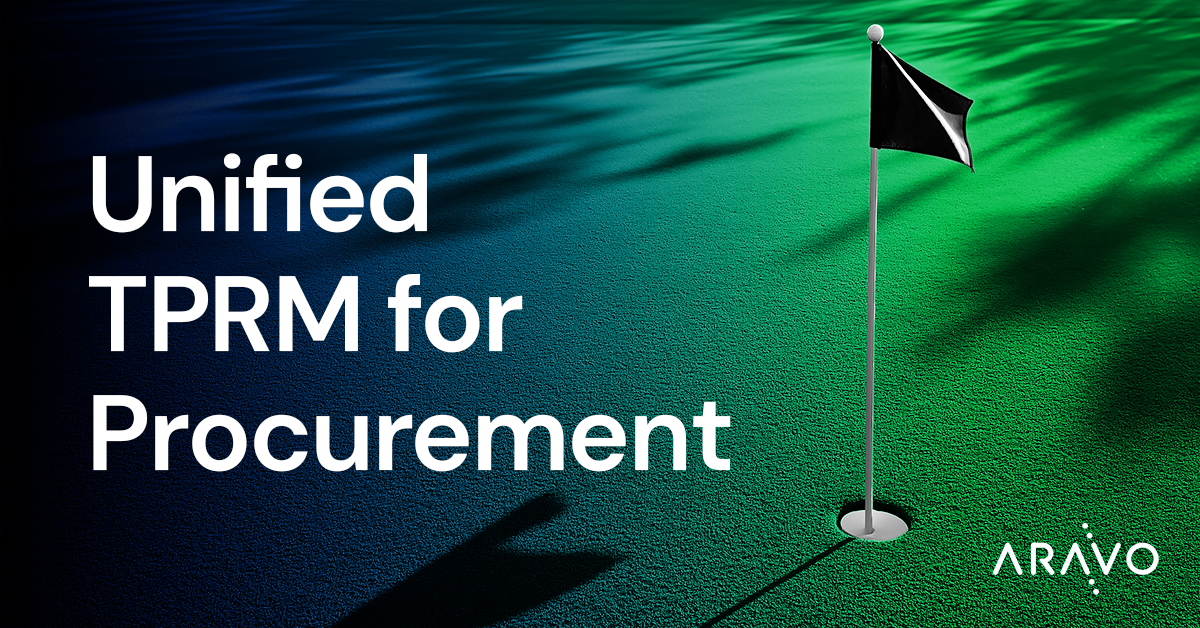
My first job as a teenager was washing golf carts at a local golf course. Officially, I was the “Cart Boy,” and my primary responsibility was simple: keep the golf carts clean. KPIs weren’t really tracked for my job, but I knew my role was important for the course’s daily operations, and I was efficient at it too.
My efficiency didn’t go unnoticed. Over time, management started tasking me with additional duties like refueling carts, performing monthly inspections for scratches or mechanical issues, and restocking scorecards and pencils daily. My role as “Cart Boy” was expanding to something bigger.
Role expansion is a common practice for organizations. As a Third-Party Risk Management (TPRM) professional interacting with all types of roles and businesses, I know from plenty of direct conversations that “role expansion” is a bit of an understatement for Procurement professionals — folks who were traditionally focused on sourcing and cost control but are now playing a critical role in third-party risk management (TPRM).
These days, it’s no longer just about collecting the third-party onboarding details (i.e., tax and banking details, diversity certifications, insurance documents, subcontractor disclosures, and detailed risk assessment data) but actively evaluating vendors on everything from price and quality to financial stability, cyber posture, data privacy, ESG, ethics, geopolitical exposure, and more.
A capable TPRM solution is critical for Procurement’s expanding role for three primary reasons:
Procurement teams can’t manage what they can’t see. When onboarding data (e.g., tax forms, insurance, DEI metrics) lives in one system, and risk assessments (e.g., cyber, reputational, regulatory) live in another—or worse, in email threads and offline files—there’s no single source of truth.
A centralized TPRM platform allows Procurement to see the full picture of a third party at a glance. This holistic visibility is vital for decision-making and ensures that critical risk signals don’t fall through the cracks during onboarding. Better visibility also means Procurement can prioritize vendors based on actual exposure, not just price or service terms.
Each new third party brings with it a long checklist of requirements—W-9s, bank verification, NDAs, security questionnaires, proof of insurance, etc. Add risk-specific tasks like control assessments or sanctions screening, and the manual work can quickly overwhelm even seasoned teams.
A single TPRM solution streamlines onboarding and risk evaluation through intelligent workflows. It ensures that nothing is missed, automatically routes tasks to the right approvers, and cuts down on back-and-forth. Procurement teams no longer have to track 20+ items in email or spreadsheets—instead, the system ensures consistency, compliance, and speed. That means less time onboarding, fewer mistakes, and faster time-to-contract.
When regulatory requirements tighten—or an internal audit arrives—the last thing you want is a messy paper trail scattered across systems. A unified TPRM platform keeps every document, action, approval, and assessment in one auditable system of record.
This not only simplifies compliance reporting (think SOC 2, ISO, GDPR, etc.) but also makes it easier to demonstrate to leadership and regulators that due diligence is being done across all third parties—whether it’s a one-person consultancy or a global logistics provider. Procurement becomes not just a buyer, but a steward of organizational resilience and risk control.
Aravo’s Enterprise TPRM solution empowers Procurement teams to manage expanding responsibilities by:
Whether your Procurement team is just beginning to collect onboarding data, expanding into third-party risk evaluation, or already engaged in mature risk and onboarding processes, Aravo offers the functionality and expertise to elevate your Procurement initiatives.
Avoid the common risk “hazards” and onboarding “bunkers” Procurement teams face today. Keep your TPRM game on “par” — talk to an Aravo expert today!
Share with Your Friends: